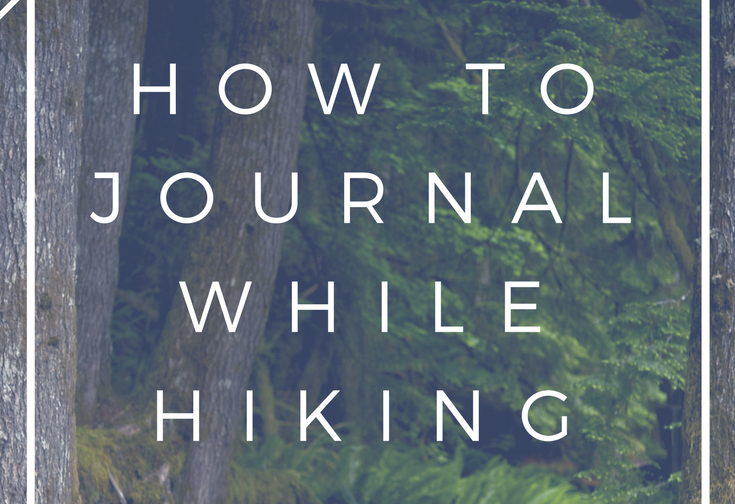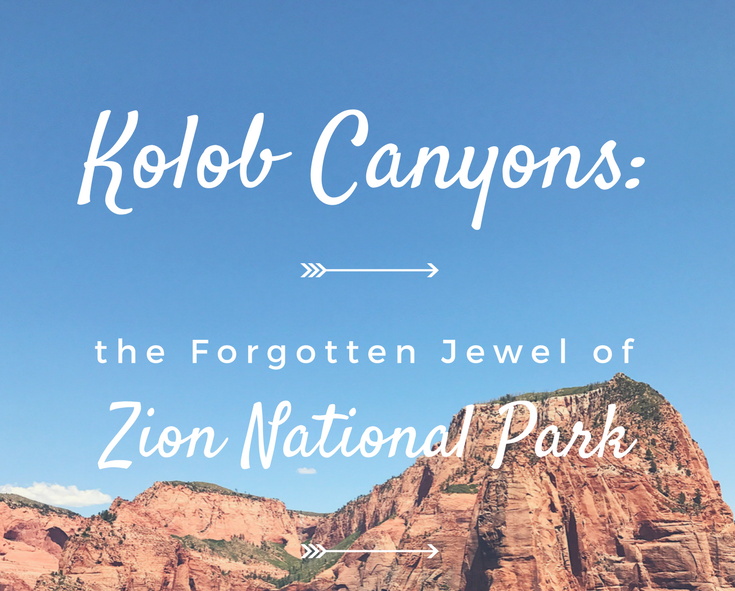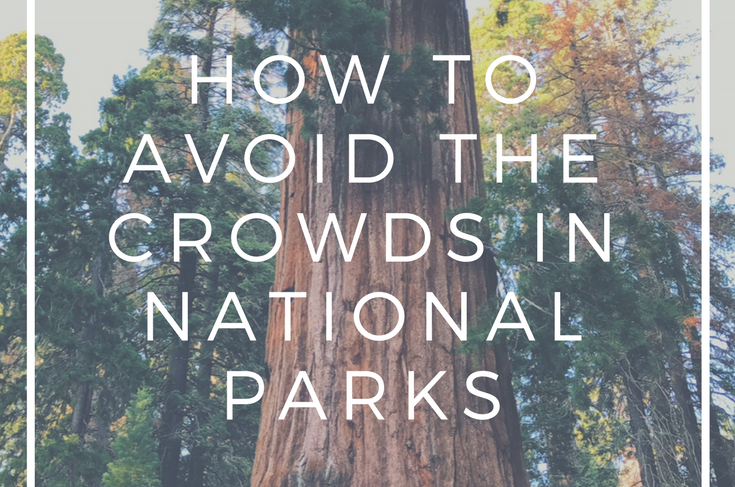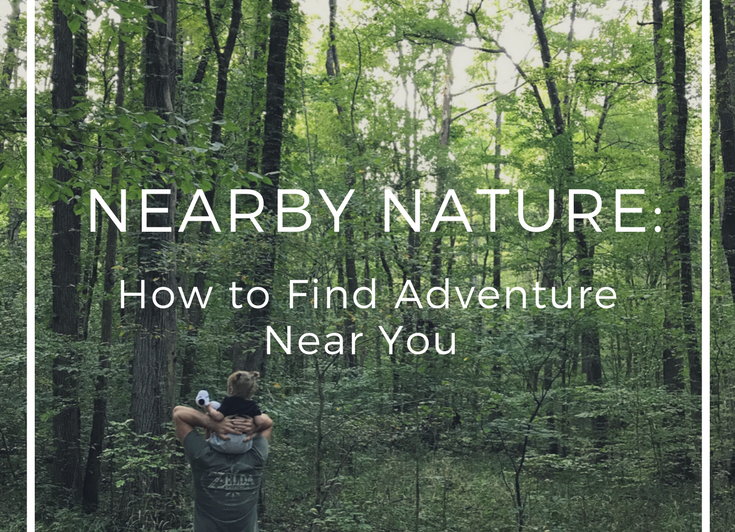Sometimes even the smallest adventures can produce the best life lessons.
I learned this firsthand when my husband, Val, and I recently took our little family of three on a weekend trip to Sequoia and Kings Canyon National Parks. The adjacent parks are known for their groves of Giant Sequoia trees, in particular, the superlative General Sherman tree and the General Grant tree. We spent our first two days in the parks wandering among the sequoias, marvelling at these truly majestic titans of the forest. A lot of things in nature are dubbed “majestic” and compared to cathedrals or other places of reverence, and it’s often overdone and hyperbolic in my opinion, but in this case, those poetic descriptors are perfectly accurate.
I can’t even properly describe the awe I felt among the sequoias. Standing at the base of the world’s largest trees - these massive plants that can live for 2,000 years or more, grow to heights of 300 feet, and trunks 26 feet in diameter - is something I think everyone needs to experience. Sequoias are so big and often gnarled by age and charred fire-scars, and yet they still exude a strange and alluring elegance. Once you’ve walked among these enchanting giants, you’ll never look at trees the same way again.
Val and baby dwarfed in a grove of giant sequoia trees in Sequoia National Park
After a thoroughly wonderful couple of days in the well-loved and sometimes crowded sequoia groves, we also wanted to see a lesser-known part of the parks. So on our last day of the trip, we made the hour-long drive down into King's Canyon itself - something less than 10% of park visitors do - with a plan to hike the Zumwalt Meadow Trail, a short 1.5-mile loop at the end of the road. The stunning views going down into the canyon easily would have made the drive worth it, but we were also excited to explore the glacial valley before driving back home that day.
The weather was a perfect 65 degrees, the hike quiet and serene as we traced along the base of the towering granite cliffs which rose thousands of feet above us. The contrast between the lush, vibrant greens of the grasses and trees on the valley floor and the grey, glacier-carved domes and cliffs rising toward the sky reminded me of Yosemite Valley, King's Canyon's close cousin a hundred miles to the north.
Towering glacial cliffs of King's Canyon along the Zumwalt Meadow Trail
We were near the end of the loop, walking along the banks of the icy cold South Fork of the King's River, swollen by the snowmelt from winter, when we learned that the last section of the trail was blocked. A photographer setting up his shot at a well-chosen viewpoint warned us, with his shoes and pant legs soaked halfway up to the knee. He told us that the river had flooded up over about a 30-foot section of the trail, and if we wanted to continue, we would have to wade through it.
Let me reiterate, this water was ice, like two seconds ago. It was extremely cold. My first instinct was to turn back; if we hurried, we could hike back the way we came without losing too much time. The trail wound away among trees and brush, so we couldn't see exactly how much of the trail was flooded, or how far we would have to brave the frigid water. And the idea of hiking the rest of the way and then sitting for hours in the car on the drive home with wet socks and boots sounded like absolute misery. (I had failed to pack an extra pair of socks, so I was without a backup - oops.)
Plus, warnings from my childhood along the Missouri and Mississippi Rivers thundered in my head, “Never judge a river by its appearance - the current is always stronger than it appears at the surface.” And, “Don’t ever wade into flood waters; it’s a lot easier to get swept off your feet than you’d expect.” But I took another look at the water down-trail. We could see right through the crystal-clear water, so there was no risk of unknown hazards, and the boardwalk trail underneath looked smooth and well-maintained - perfectly safe to hike with bare feet. Problem solved! We could simply carry our shoes and roll up our pants and thereby avoid any uncomfortable sogginess. The baby was riding safely in her Osprey child carrier pack, so we didn’t have to worry about her.
So, off came the shoes and socks, and into the liquid ice we stepped.
The first few steps weren’t too bad, but then we rounded the bend and quickly realized that the flooded section of the trail extended much farther than the 30 feet the photographer had told us. We were in too far to turn back now, so we forged on, and the water climbed up our shins. The icy temperature made my feet hurt and my heart rate soar, but oh, it was also exhilarating! About halfway through, the trees opened up to reveal the most amazing view down the valley. My feet were numb and it felt like a frost giant was clawing relentlessly at my legs, but I managed to stop to capture the shot:
View across Zumwalt Meadow in Kings Canyon National Park
We made it across, where a bench was perfectly placed for us to warm up and dry our feet in the sun before heading back to the car. We even met a few families hiking the opposite direction around the loop and got to revel in the amazing view together before encouraging them to try wading through the water like we had just done.
Our trek through the frigid river water turned out to be like a portal from mediocre to memorable. The easy thing would have been to turn back, but we really would have had to rush and that would definitely have ruined the experience. Instead, we did the crazy, uncomfortable, and slightly scary thing, and it elevated an otherwise pleasant hike to the adventure level. That twenty or thirty seconds of rushing down the flooded trail, heart-racing and feeling like my legs were going to freeze off at a moment's notice, will be forever cemented in my memory as an amazing experience in an absolutely stunning place.
Looking back over the flooded trail (the water may look warm and inviting, but it is LYING)
The lesson I learned? Oftentimes, is the uncomfortable things that make the difference. It's when we force ourselves outside of our comfort zones that we find the extraordinary.
Whether it's on a vacation in the wilderness, or an opportunity at work, or a chance to serve your community, it's tempting to do the easy thing and turn back, or just walk on past. But I urge you to do something this week to step outside your usual routine, skip the easy option, and do the uncomfortable. You might just find yourself making some amazing memories, meeting new friends, or gaining other rewards you never even knew were possible!
Happy Adventuring!
This article contains affiliate links. That means that if you purchase something through my link, I'll receive a small commission, at no extra cost to you. Your support helps me keep the Dear Summit Blog going!
While you’re here, check out my hand drawn, eco-friendly national parks gear and other adventure-ready goods in the Dear Summit Supply Co. Shop:









